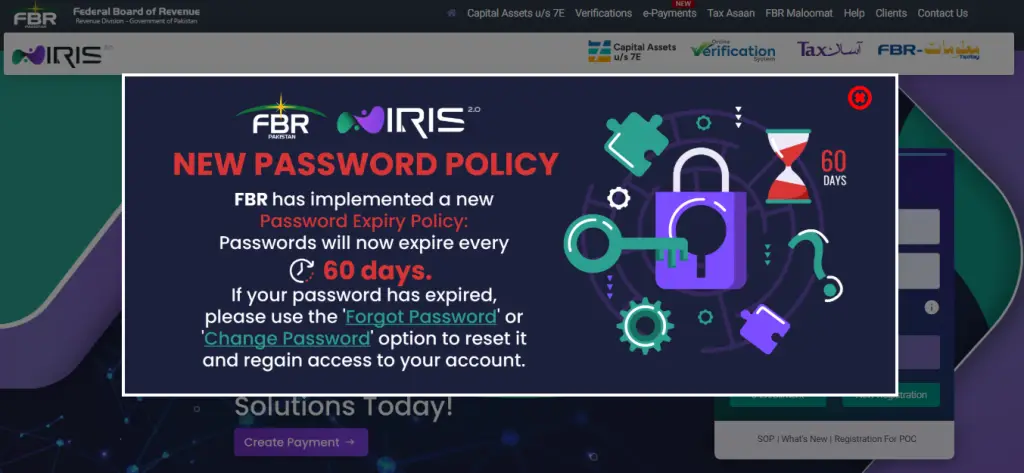FBR Introduces New Tax Return Form Again: What It Means for Taxpayers and Why Experts Advise Caution
ISLAMABAD – In a surprise move, the Federal Board of Revenue (FBR) has once again revised the tax return form for the fiscal year 2024–25, sparking confusion and concern among salaried individuals and professionals across Pakistan. While the government maintains that this reform is part of its broader digital transformation agenda, many tax experts are warning citizens to exercise caution before filing.
The image circulating on social media and video platforms shows a qualified ACCA Member cautioning, “غلطی سے بھی ریٹرن فائل نہ کریں” – “Do not file your return even by mistake.” This strongly worded warning has raised eyebrows, prompting questions: What changed in the return form? Why was it reissued? And what risks do taxpayers face?
📌 Background: Why the Form Was Revised Again
This revision is part of FBR’s ongoing efforts to modernize tax collection, improve compliance, and widen Pakistan’s historically narrow tax base. The tax-to-GDP ratio in Pakistan remains among the lowest in South Asia, with fewer than 3 million people filing returns in a country of over 240 million.
To align with the commitments under the $7 billion IMF program, the government is under pressure to:
-
Eliminate tax leakages
-
Bring informal economy into the tax net
-
Digitize tax processes
-
Phase out arbitrary exemptions
The new tax form is designed to incorporate:
-
AI-based validation systems
-
Pre-filled salary and bank information
-
Linkages with CNIC, withholding data, and property ownership records
However, the abrupt re-issuance of the return form mid-season has raised operational and legal concerns among practitioners and taxpayers alike.
🧾 Key Features of the New Tax Return Form
The revised return form introduces several new sections and changes. Here’s a breakdown:
✅ 1. Digital First Approach
The return is now integrated into FBR’s IRIS 2.0 platform, requiring all users to file electronically.
✅ 2. AI-Powered Data Validation
FBR is using AI to match declared income with third-party data (bank records, utility bills, real estate holdings).
✅ 3. Pre-Filled Salary & Tax Deductions
For salaried individuals, salary figures and employer deductions may already be populated — leaving little room for manual entry errors.
✅ 4. Declaration of Non-Salary Income
Taxpayers must now explicitly declare:
-
Freelance income
-
Rent
-
Foreign remittances (including Payoneer, Wise, etc.)
-
Gains on investments or cryptocurrencies
✅ 5. Updated Asset Declaration Requirements
More detailed asset statements are mandatory for filers whose income exceeds Rs. 5 million.
🚨 Expert Warning: Don’t File in a Hurry
Tax consultants and ACCA professionals are urging caution. Filing incorrectly could:
-
Trigger audit notices
-
Result in penalty fines
-
Lead to loss of filer status
-
Delay refunds
-
Cause discrepancies in FBR’s AI-based risk profiling
In the video highlighted by the viral thumbnail, the expert clearly says, “Wait until you fully understand the form. A mistake now can create a lasting issue with your tax profile.”
💬 Common Mistakes Taxpayers Should Avoid
-
Using last year’s figures blindly without verifying changes in income or deductions.
-
Submitting without reviewing pre-filled data (which might have system errors).
-
Ignoring non-salary income, such as online freelancing or commissions.
-
Failing to report foreign bank accounts or remittances.
-
Skipping detailed asset declarations if falling in the required income bracket.
📢 Government Response & Public Awareness Efforts
Prime Minister Shehbaz Sharif has instructed FBR to launch a nationwide awareness campaign to educate taxpayers about the new system. The PM also emphasized the importance of introducing an Urdu-language return form for accessibility.
He praised the use of AI and digital invoicing, calling it a “milestone” in Pakistan’s financial governance, but stressed that SMEs and salaried individuals must be supported through the transition.
💰 Record Tax Collection Target Ahead
This reform comes at a time when the government has set an ambitious tax revenue target of Rs. 14.13 trillion ($47.4 billion) for FY 2025–26 — a 9% increase from the previous year.
Meeting this target is essential for:
-
Reducing dependence on external loans
-
Building a sustainable fiscal framework
-
Attracting international investor confidence
🧠 IMF Perspective: Reform Is Crucial, but Execution Matters
IMF Resident Representative Mahir Binici recently stated that Pakistan’s tax reforms have restored some investor confidence, but also warned that inconsistent execution and poor communication can undermine progress.
“Structural reforms remain central to Pakistan’s long-term economic sustainability, particularly reforms that strengthen tax equity,” he added.
✅ Final Thoughts: File Smart, Not Fast
While the new tax return form is a step in the right direction for digitization and transparency, the FBR must ensure:
-
Clear instructions
-
Urdu translations
-
Live support or chatbot help
-
Real-time validation feedback during filing
Taxpayers are advised to:
-
Wait for official instructions
-
Avoid early filing without full clarity


